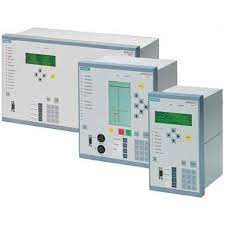Siemens relays are critical components in power systems, providing protection against faults and ensuring the reliable operation of electrical networks. Proper testing and maintenance of Siemens relays are essential to guarantee their effectiveness and longevity. In this comprehensive guide, we will explore the best practices for testing and maintaining Siemens relays, covering key procedures, tools, and considerations to optimize relay performance and contribute to the overall reliability of power systems.
- Introduction to Siemens Relays
Siemens relays are advanced protective devices designed to detect abnormal conditions in power systems and initiate appropriate actions to safeguard equipment and maintain grid stability. These relays play a crucial role in preventing electrical failures, minimizing downtime, and ensuring the safety of both equipment and personnel. Effective testing and maintenance practices are essential to validate the performance of Siemens relays and address any potential issues that may arise during their operational life.
- Importance of Testing Siemens Relays
- Reliability Verification:
Testing Siemens relays is crucial for verifying their reliability under different operating conditions. This includes testing their response to various fault scenarios, ensuring that they operate within specified timeframes and coordination settings.
- Coordination and Selectivity:
Relays in a power system must coordinate effectively to isolate faults selectively. Testing helps ensure that the settings of Siemens relays are coordinated with other protective devices, preventing unnecessary tripping and minimizing the impact of faults.
- Compliance with Standards:
Testing Siemens relays ensures compliance with industry standards and specifications. It is essential to validate that relays meet the performance requirements outlined in standards such as IEEE and IEC, guaranteeing their reliability and adherence to recognized benchmarks.
- Early Fault Detection:
Regular testing allows for the early detection of potential issues or malfunctions in Siemens relays. Identifying problems before they escalate helps prevent equipment damage, reduces downtime, and enhances overall system reliability.
- Best Practices for Testing Siemens Relays
- Functional Testing:
- Primary Injection Testing: Conduct primary injection testing to verify the response of Siemens relays to simulated fault currents. This test involves injecting a current directly into the primary side of the relay, allowing for comprehensive testing of the entire protection system.
- Secondary Injection Testing: Secondary injection testing involves injecting simulated signals into the secondary side of the relay. This method is used to validate the performance of specific relay functions, including trip and alarm functionalities.
- Secondary Injection Test Set:
Invest in a reliable secondary injection test set compatible with Siemens relays. This equipment provides precise control over injected currents and voltages, allowing for accurate testing of relay responses.
- Relay Coordination Testing:
Coordinate testing involves verifying that different protective devices in the system coordinate correctly. Use coordination testing to ensure that Siemens relays operate in the intended sequence during fault conditions.
- Communication Testing:
If Siemens relays are equipped with communication capabilities, conduct communication testing to ensure proper data exchange between relays and other intelligent electronic devices (IEDs) in the substation. This is particularly relevant for relays compliant with the IEC 61850 standard.
- Overcurrent and Earth Fault Testing:
Verify the accuracy of overcurrent and earth fault protection by applying test currents at various levels. This ensures that Siemens relays accurately detect and respond to overcurrent and ground fault conditions.
- Protection Setting Verification:
Regularly verify and document the settings of Siemens relays. Changes in system configuration or operating conditions may necessitate adjustments to relay settings to maintain optimal protection coordination.
- Thermal Imaging:
Utilize thermal imaging to inspect Siemens relays for any signs of overheating. Anomalies in temperature patterns may indicate loose connections, degraded components, or other issues that require attention.
- Periodic Maintenance Checks:
In addition to specific testing procedures, conduct routine maintenance checks. Inspect Siemens relays for physical damage, cleanliness, and proper mounting. Clean and tighten connections as needed.
- Firmware and Software Updates:
Stay updated with the latest firmware and software releases from Siemens. Regularly apply updates to ensure that relays benefit from bug fixes, performance improvements, and enhanced security features.
- Siemens Relay-Specific Considerations
- Siemens SIPROTEC Relays:
Siemens SIPROTEC relays are known for their advanced protection and control capabilities. When testing SIPROTEC relays, ensure that you are using test equipment compatible with the relay's communication protocols, such as IEC 61850.
- Relay Self-Testing Features:
Many Siemens relays come with self-testing features. Leverage these built-in diagnostic capabilities to perform routine health checks and identify potential issues. Incorporate self-testing results into overall maintenance practices.
- Siemens DIGSI Software:
Siemens relays often use the DIGSI software for configuration and monitoring. Familiarize yourself with the features of DIGSI for efficient relay parameterization, fault analysis, and event retrieval during testing.
- Siemens Reyrolle Relays:
For Siemens Reyrolle relays, refer to the manufacturer's documentation for specific testing procedures and recommended practices. Manufacturers often provide detailed guides for relay testing and maintenance.
- Challenges in Testing Siemens Relays
- Interoperability Issues:
Interoperability challenges may arise when testing Siemens relays in systems with components from different manufacturers. Ensure that test equipment and procedures are compatible with Siemens relays and the broader substation environment.
- Complex Relay Settings:
Siemens relays can have intricate settings that require careful consideration during testing. Thoroughly understand the relay's settings and coordinate testing activities accordingly to avoid misoperations.
- Integration with Smart Grid Technologies:
As power systems evolve with smart grid technologies, testing Siemens relays for compatibility with communication protocols and digitalization features becomes crucial. Ensure that testing practices align with smart grid integration requirements.
- Cybersecurity Concerns:
The integration of communication capabilities in Siemens relays introduces cybersecurity considerations. Test and implement robust cybersecurity measures to protect relay communication channels from potential threats.
- Future Trends in Siemens Relay Testing
- Artificial Intelligence (AI) Integration:
The integration of AI in relay testing is an emerging trend. AI algorithms can analyze large datasets generated during testing, identify patterns, and provide insights for optimizing relay settings and performance.
- Digital Twin Technology:
Digital twin technology can be applied to create virtual replicas of Siemens relays and the broader substation environment. This allows for simulation-based testing and predictive maintenance, optimizing testing procedures.
- Cloud-Based Testing Solutions:
Cloud-based testing solutions offer the potential for remote testing and data storage. This trend aligns with broader industry shifts towards cloud-based services and can enhance the accessibility and efficiency of relay testing practices.
- Enhanced Communication Protocols:
As communication protocols continue to evolve, future Siemens relays may incorporate even more advanced communication features. Testing practices will need to adapt to these enhancements, ensuring comprehensive evaluation of relay communication capabilities.
Conclusion
Effective testing and maintenance practices are integral to the reliable operation of Siemens relays in power systems. By following best practices such as functional testing, coordination testing, and regular maintenance checks, operators can ensure that relays perform optimally and adhere to industry standards. Specific considerations for Siemens relays, including the use of compatible test equipment and understanding relay settings, contribute to successful testing processes. As power systems advance with smart grid technologies, addressing challenges related to interoperability and cyber security becomes increasingly important. Looking forward, the integration of AI, digital twin technology, and cloud-based solutions will likely shape the future of Siemens relay testing, offering enhanced efficiency and insights for power system operators.


No comments yet